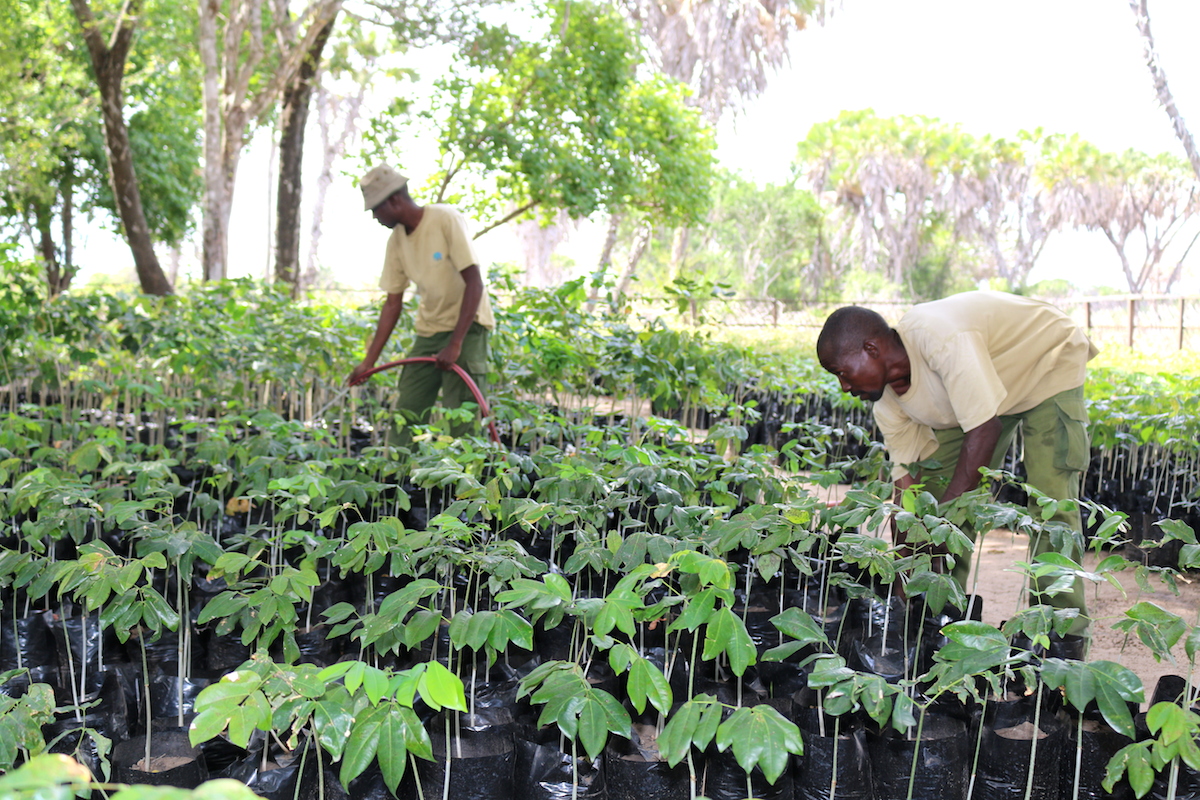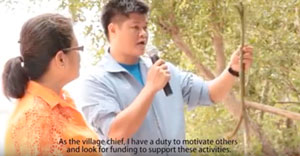PREVIEW VERSION
|
The MAP News |
|
|
FEATURE STORY
Researchers will be funded to study 'globally unique' mangrove deaths AUSTRALIA - Environmental researchers will be funded to investigate climate change in the Northern Territory's Gulf region over the past century, following the death of thousands of hectares of mangroves last year. Experts called it a "globally unique" phenomenon when they found a 200-kilometre stretch of dead mangroves along the Gulf of Carpentaria in the NT, stretching to Karumba in North Queensland. "We've seen almost 1,000 kilometres of dieback, it's very patchy; there are some areas which have survived, others have got very high levels of mortality," said Lindsay Hutley, Professor of environmental science at the Charles Darwin University (CDU). The NT Government has announced a $200,000 research grant to CDU to urgently study the mangrove dieback, a condition in which the tree dies from the tip of its leaves or roots backwards, generally as a cause of environmental conditions or disease. "We need to understand the causality that's driven this quite remarkable event in northern Australia," Professor Hutley said. READ MORE AFRICA Nations come together to save Kenya’s disappearing coastal forests  KENYA - Dense green foliage flanks the dusty, heavily potholed road in Witu Forest, a protected area on the Kenyan coast about 75 kilometers from the city of Lamu. Comprising native shrubs, grasses, and trees, the area has so far escaped the massive deforestation that has befallen much of northern Kenya’s coastal forests lining the country’s portion of the Horn of Africa. Nearby, patches of cleared and burned land await conversion to agricultural land and new settlements – a common theme in this part of East Africa. This area is part of a coastal forest belt near the Kenya-Somalia border is part of the Eastern Africa Coastal Forests ecoregion that stretches from southern Somalia through Kenya and Tanzania and most of Mozambique’s coast, ending at the Limpopo River. According to the Kenya Forest Service (KFS), the Kenyan portion covers an area of over 120,000 hectares, with mangroves comprising around 20,000 hectares. Considered one of Conservation International’s 35 “biodiversity hotspots,” the region is home to a wide variety of wildlife – many endemic, meaning they’re found nowhere else in the world. READ MORE Govt in new bid to protect mangrove forests KENYA - The Kenya Forestry Research Institute (Kefri) is in the process of developing a master plan to protect mangrove forests in the country. This follows the massive loss of mangroves along Kenya's coastline that forced the government to ban the cutting of the trees. Kefri Board chairman Sammy Latema said the country has lost almost 18 per cent of its mangrove cover since 1985. Addressing journalists in Lamu shortly after paying a courtesy call on Governor Issa Timamy at the weekend, Mr Latema said it is unfortunate that a big number of mangroves are being lost every year in the country. "The rate at which mangroves are being cut is worrying. In fact, the rate of replacement does not match what we are losing. That’s why we are developing a plan to enable sustainable utilisation," said Mr Latema. READ MORE Mangrove protection key to survival for Senegalese community SENEGAL - Pelicans, flamingos, monkeys and even hyenas are under threat in Senegal along with the livelihoods of the local people as thick clusters of mangroves are disappearing. And it seems that not even an ancestral spirit can save them. The protected marine area (AMP) of Joal in western Senegal, just to the north of the Gambia, is home to an incredibly rich biodiversity. The hardy mangrove shrubs thrive in salty water, thick mud and hot, humid conditions that would kill most other plants. Part of Senegal's peaceful Petite Cote, Joal's mangroves are being eroded by a combination of factors, including global warming, deforestation, public works, oyster and clam fishing, salination of the fresh water river and drought. All along the riverbed, great swathes of sandy dunes have appeared in place of the once suffocating canopy of mangroves. "The empty spaces are areas where the mangrove has disappeared," said Abdoulaye Sagna, a manager at the Joal AMP. READ MORE Kwale community nets cash protecting mangroves KENYA - Along Kenya’s coastline at Makongeni area in Kwale County lies some 615 hectares of thick Mangrove forest jealously guarded by the surrounding communities who a few years back harvested the plant for economic purposes. The plantation served as a raw material for building houses and boats to a community whose nearly 90 per cent of population depends on fishing. The change sweeping the area is necessitated by the importance of conserving mangroves to fight climate change and using the proceeds to improve people’s lives, which is now turning out to be of tangible benefits beyond the area. Through a partnership with Kenya Forest Service, Kenya Marine and Fisheries Research Institute, and Plan Vivo which is a registered Scottish charity, they are making millions of shillings through protection and populating Coastline with more mangrove. A project started two years ago now earns the community between Sh1 million to Sh1.2 million per year depending on the performance of local currency. READ MORE ASIA Collaborating to enhance coastal resilience in Thailand  THAILAND - Through Mangroves for the Future (MFF), IUCN established a partnership with Marriott Hotels & Resorts to protect the environment and support Thailand’s local communities through mangrove restoration, the use of sustainable seafood sources and local procurement practices. At a recent mangrove plantation event with Marriott Hotels & Resorts Staff at Ka Long, Samut Sakhon, MFF interviewed the village chief Tipaya Saejiw on how this project has helped build the resilience of her community. MFF would like to thank Denise Ng, a multimedia journalist and oral history practitioner with an interest in sustainable development, for editing this video. Read more about MFF's collaboration with Marriott Hotels & Resorts here: WATCH VIDEO Snails, bamboo, mangroves dominate Philippines climate pitch PHILIPPINES - Peppered with references to snails and bamboos, the Philippine environment secretary’s speech at the UN Climate Change talks on 16 Nov has raised concerns that it obscured the country’s call for more ambitious and urgent global climate action. Secretary Gina Lopez said at the high-level segment of the 22nd Conference of Parties (COP22) that failure to limit the global average temperature to 1.5C can lead to the destruction of the country’s “3,000 species of marine life,” one of which is snails. “This is not just the wealth of the Philippines – it is the wealth of all of us together,” she stressed, specifying endemic species such as a snail, whose “venom has been found by a Nobel laureate to be better than morphine in addressing pain without the side effects.” It’s an example that showcased the country’s marine biodiversity, but not all in the delegation are sure that it captured the gravity of the impacts of climate change on the Philippines, one of the countries most vulnerable to strong storms and drought. READ MORE Apple mangroves make a comeback along Mumbai’s coast after a decade INDIA - Over the past five years, an uncommon mangrove species has started to dominate wetland and creek areas along the Mumbai coast – one that was barely visible a decade ago. Mangrove cell officials have recorded a threefold increase in the cover of apple mangroves (Sonneratia alba) at creek edges from 2% to 6% across Mumbai, Navi Mumbai and Thane since 2011. Environmentalists said the increase in the mangrove cover assumes significance since these trees play an important role in absorbing pollutants in water bodies. Wetlands across Mumbai and Thane have been witnessing large scale destruction due to encroachments, debris dumping and untreated sewage. Additionally, Thane city also harbours Asia’s largest industrial complex, effluents of which are released directly or indirectly into the creek, thereby increasing pollution and affecting growth of mangroves. A rapid biodiversity assessment report in 2015 revealed a 90% decline in the number of fishes at the Thane creek due to high levels of water pollution. READ MORE AMERICAS Fate of Colombian shellfish pickers closely tied to mangrove  COLUMBIA - Along the northern edge of Colombia’s Pacific coast region, thousands of people rely on an unassuming shellfish called a “piangua” for daily survival. The small, black clam lives tucked deep in the stinky mud of mangrove trees. But the global decline of mangrove forests at about 1 percent annually, years-long decline of the piangua, encroaching drug traffickers, and the stigma surrounding piangua pickers are endangering the traditional practice of piangua picking. Though found along much of Colombia’s Pacific coast, the vast majority of piangua are found in the region of Sanquianga. The extraction of piangua, a clam that’s rich in nutrients and flavor, has long been a key economic activity in the region. It is found in coastal areas from Mexico to Peru, and acts as a natural filter that helps to preserve the oxygenation of the sediments that keep the mangrove alive. READ MORE Everglades mangroves worth billions in fight against climate change USA - When it comes to storing carbon, scientists have put a price tag on the value of mangroves in Everglades National Park and it's in the billions. Based on a scientific cost estimate, the stored carbon is worth between $2 billion and $3.4 billion, the researchers found. It is a relatively small price when considering the cost to society if the carbon currently stored in these mangroves were ever released into the atmosphere, according to the researchers at FIU who co-authored the study. "Although the Everglades National Park is a protected national treasure, the National Parks Service doesn't have much control over freshwater flowing into the park," said Mahadev Bhat, co-author of the study and professor in the Department of Earth and Environment. "If there isn't enough freshwater flowing through the Everglades, we may eventually lose some of the mangroves. And once you let stored carbon out, that same carbon can lead to increased global warming and cost society a lot more." READ MORE OCEANA Why you should care about Australia's mangroves AUSTRALIA - The importance of trees is taught to us at a young age — they filter the air we breathe by converting carbon dioxide to oxygen. But how important are mangroves? Just like their land-locked relatives, mangroves filter the air, but their importance to the environment goes beyond that. "They're a tree obviously, so they're producing oxygen and people think of them as lungs, but you've got to think of them as kidneys as well," James Cook University (JCU) associate professor Jamie Seymour said. "Everything that comes in gets sucked up by these [mangroves] and they suck all the bad things out. Things like fertilizers and run-off, all those sorts of things, this is what mangroves are really good at. They're capable of sucking all that up. "As well as filtering the air and the oceans, mangroves provide shelter for a range of species. READ MORE LAST WORD What? No Last Word? We welcome your letters and comments. Let us know about your projects and activities. BACK TO TOP Not yet a subscriber? Click here to subscribe. Please cut and paste these news alerts/ action alerts on to your own lists and contacts. Help us spread the word and further generate letters of concern, as this can make a big difference in helping to halt a wrongdoing or encourage correct action.
|
Action Alerts:VOTE The Nagenahiru Project on Solar Power for Night Fishing in Sri Lanka is selected as a finalist by the Water, Air and Food Foundation in Denmak. VOTE HERE
|
Mangrove Action ProjectClick here to view past newsletters |
|










No comments:
Post a Comment
Note: Only a member of this blog may post a comment.